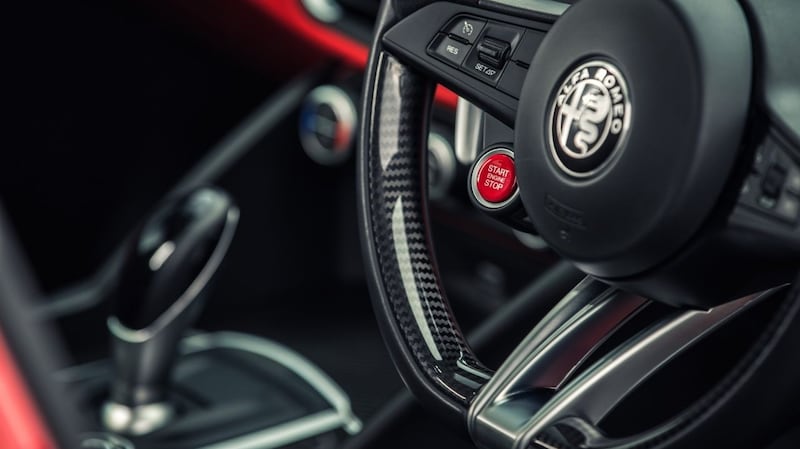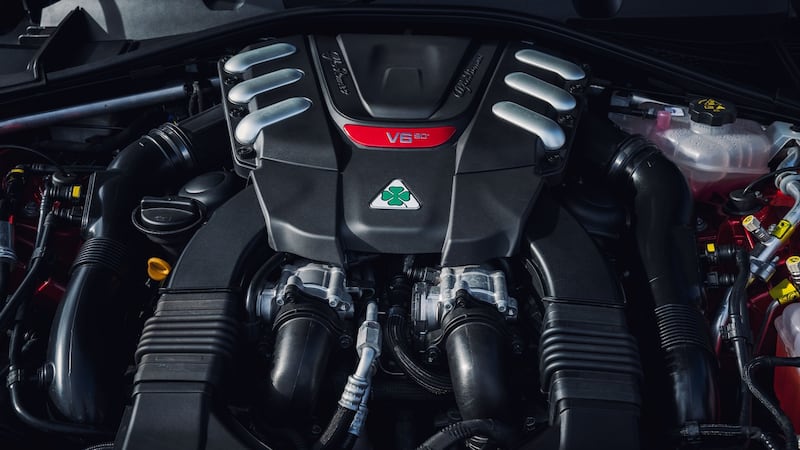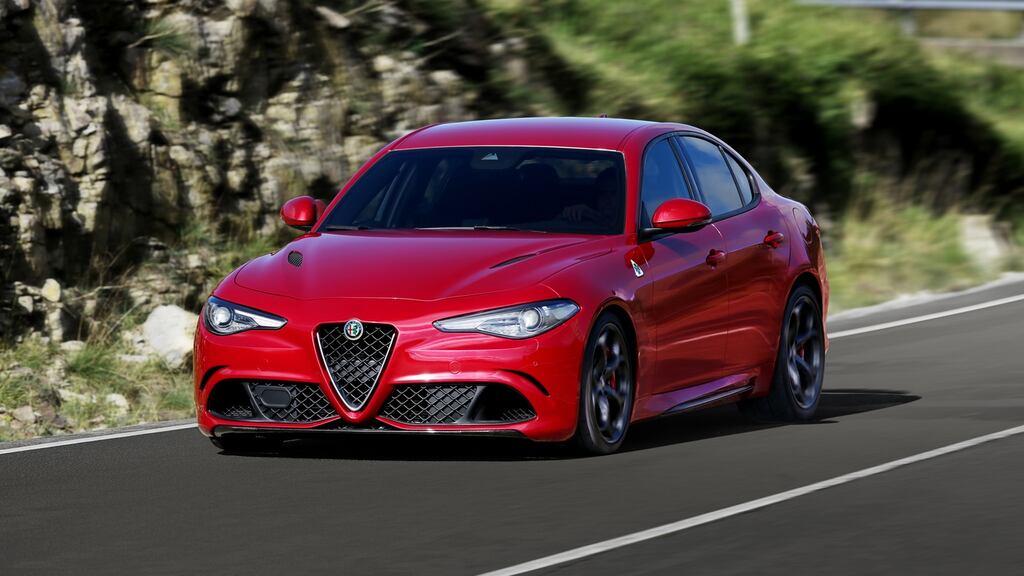Alfa Romeo evokes one of three emotions: desire, nonchalance or anger. That's the DNA of the Italian brand these days. Desire from those who fondly recall the sepia-tinted heyday when Alfa epitomised motoring passion. Nonchalance from those under the age of 45 who have little reference point for the marque, outside the odd classic car show. And anger from the legions of 156 owners, won over by stunning looks but who suffered from poor resale values due largely to a less than illustrious reliability record.
Much as the brand is defined by its history and heritage, for good and ill, the past decade has been a struggle for survival.
There are effectively now two disparate ends of the Italian motoring spectrum: the passion and performance of the Ferraris and Lamborghinis and the cute and cuddly world of the Fiat 500. Both play strongly on heritage and emotion.


The new Alfa Giulia Quadrifoglio may bear some resemblance to a family saloon, but its DNA is much closer to the Italian sports cars. This Alfa can hit 100km/h from a standing start in 3.9 seconds.
Put that in context: reading an average speed of four words per second, it can hit 100km/h quicker than you can read the first sentence of this review.
That acceleration matches the pace of a Lamborghini Gallardo 5.0 Superleggera, a Caterham 7 Superlight, or the legendary 1980s Ferrari F40.
It puts out 510bhp from its 2.9-litre V6 engine, boasting an official top speed of 307km/h. That’s just 20km/h shy of the speeds achieved by racing cars in Le Mans on the Mulsanne Straight.
This is where we normally point out how, despite this motoring muscle, it’s a meek little kitten in everyday life. But that’s nonsense in this case. From the moment you press the start button mounted on the steering wheel, you know this is no ordinary car. In fairness, you probably pick up that message from the moment you get first sight of the car, with its low profile tyres and bright brake callipers. If not, then the teeth-rattling rumble from the exhaust will leave you in no doubt. This motor has menace.
The new Giulia has been criticised – by me among others – for too closely resembling Alfa saloons of old. Despite being billed as a revolution for the brand, the styling is nothing radical. Yet the car does benefit from an incredibly agile chassis.
Built around a new rear-wheel drive architecture, the Giulia’s ace card is its engaging drive. Its engineers have seemingly built the car on a balancing scales, achieving the much sought-after 50/50 weight distribution across its axles. Carbon fibre features in the Giulia’s driveshaft, while aluminium is used in the doors, suspension and wings.
The Giulia features Alfa’s DNA switch, a feature in its cars that offers a choice of Dynamic, Normal or All weather settings. With the Quadrifoglio you also get the option of DNA Pro, which features race mode. This removes the safety net of traction control in a rear-wheel drive car pushing out 510bhp. On a dry day on good surfacing that shouldn’t be a problem, but it’s probably best reserved for the race track.
The reality is that in dynamic mode, traction control doesn’t impede the fun. This is still an incredibly engaging drive. And the grip is inspiring, with power delivered via 285mm of threaded rubber on each rear wheel.
Even with a nose-bleeding price tag of €100,000 for an Alfa saloon, its performance is impressive enough to warrant a place at the front of the grid against rivals. It outruns the BMW M3 and M2, and even the Mercedes C63 AMG.
The Quadrifoglio is raw. It’s passionate. It’s a motoring manifestation of our caricature of the Italian character – without the flaws. The real star is the car’s underpinnings, proving that the firms’ rear-wheel drive platform was worth the wait. And it’s V6 engine is a gem.
A five-star car? Perhaps. Yet this is a €100,000 racing version of a model that’s really only going to make its mark on Irish roads as a 2.2-litre diesel. The Quadrifoglio can’t be used as the reference point for the rest of the Giulia range.
The “regular” €40,000 car lacks the potent performance that showcases the platform’s ability, so there isn’t the thrill to distract from some of the Giulia’s weaker elements, like its Betamax-equivalent infotainment control system.
Alfa enthusiasts are fundamentalist in their defence of the brand, an admirable trait if a little straining when you have to face their ire every time you write a supposedly blasphemous reviews of its products.
The reality is the regular Giulia is just about good enough to mix it with its German rivals, but certainly not a leader and not the saviour Alfa Romeo so desperately need to revive its fortunes.
After nearly a decade in hiatus, reviving the brand is likely to prove a massive undertaking, particularly as the motoring landscape has radically changed in that time.
The motor industry is undergoing a revolution in terms of alternative powertrains and autonomous technology. For the younger generations it’s as much about the tech as it is about the motoring punch. Against this backdrop Alfa seems too fixated on a heritage for which it can be rightly proud and one that gives it a unique identity, but which means less and less among those sought-after younger buyers.
The Quadrifoglio is a wonderful icon for the brand, encapsulating its legendary DNA. It leaves its high performance German rivals looking positively lethargic. Should you have €100,000 to spend on something that stands apart from the high performance crowd, then it might well fit the bill. It’s unlikely to be enough, however, to lure many buyers to the more affordable Giulia offerings. Nor can it singlehandedly revive Alfa’s fortunes.
Lowdown: Alfa Romeo Giulia Quadrifoglio
Engine:
2891cc V6 putting out 510bhp @ 6,500rpm and a maximum torque of 600Nm @ 2,500rpm. Rear-wheel drive with 8-speed automatic transmission
0-100km/h:
3.9 seconds
Top speed:
307 km/h
L/100km (mpg):
8.2 (34.45)
Co2 emissions (motor tax):
189g/km (€750)
Price:
€99,945 (€103,795 as tested)












